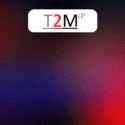|
|
|
 www.design-reuse-china.com
www.design-reuse-china.com |
|

Palma Ceia SemiDesign Announces Silicon-Proven Dual Band LTE NB-IoT Transceiver for IoT Applications
Feb. 18, 2019 –
Palma Ceia SemiDesign Announces Silicon-Proven Dual Band LTE NB-IoT Transceiver for IoT Applications
SANTA CLARA, Calif. -- February 18, 2019 -- Palma Ceia SemiDesign (PCS), a provider of next-generation wireless connectivity solutions, today announced a silicon-proven LTE NB-IoT transceiver for the Internet of Things (IoT) and Machine-to-Machine (M2M) applications. The transceiver performance conforms to the LTE NB-IoT specification, part of Release 14 from 3GPP. A full characterization report is available for customers that want to review the detailed results.
“The results we are getting from our new silicon show excellent performance across all the operating bands of NB-IoT Release 14,” said James E. Flowers, co-founder & chief operating officer of Palma Ceia. “We continue our ongoing efforts to provide the best-performing IoT connectivity IP, including this 3GPP standard and the WiFi HaLow standard (802.11ah) as well.”
New features of the PCS transceiver include:
- Meeting the performance requirements of 3GPP LTE Advanced Release 14 for NB-IoT
- Support for Low Band (LB), from 699MHz to 960MHz: bands 5, 8, 12, 13, 17, 18, 19, 20, 26 and 28
- Support for High Band (HB), from 1695MHz to 2200MHz: bands 1, 2, 3, 66 and 70
Features of the PCS integrated transceiver include:
LTE NB-IoT transceiver IP Cores
- Direct conversion receiver with a noise figure of less than 2.5 dB
- Highly linear architecture offering operating margin exceeding 3GPP linearity requirements
- Self-contained calibration and correction schemes for better performance and high yield
- Fully automated DC offset correction
- Total RX current of 15mA and TX current of 22mA at max power
- Targeted 200kHz implementation offers lower power versus LTE-M1 at 1.4MHz
- Transmitter noise, power ramp and Spurious performance exceed 3GPP requirements resulting in SAW-less transmitter
- Under max power condition, transmitter exhibits an EVM of less than 2 percent for single and multiple tones
LTE NB-IoT (LTE-NB1) is a cellular 3GPP standard that utilizes licensed bands to provide low-power connectivity compared to the conventional cellular connections for smart phones. Setting up networks of IoT devices benefits from cellular capacity handling, allowing the creation of large networks of devices, or sensors, that support the concept of the Internet of Things. The performance (throughput/data handling) is intended to be competitive with proprietary LPWA alternatives but uses the existing infrastructure of cellular services providers.
Palma Ceia is moving along a path to produce both a transceiver chip with baseband and a module that can be used as the wireless communication mechanism to interface IoT and M2M products. Along with the possibility of integrating this IP into an SoC, Palma Ceia will be able to offer customers all the necessary options to implement IoT devices in the many and varied application verticals that make up this market.
The current offering is packaged as hard IP (GDS) complete with User/Integration Guide. A test board under development and can be linked to an FPGA for systems testing and validation.
To discuss potential partnerships for deploying the LTE NB-IoT Transceiver, contact Palma Ceia via email at partners@pcsemi.com.
About Palma Ceia SemiDesign
Palma Ceia SemiDesign, Inc. is a provider of communication IP and chips for next-generation WiFi and cellular applications. With a focus on emerging WiFi and LTE standards, PCS supports the design of high-performance devices for broadband, wireless, medical and automotive applications. Palma Ceia solutions are differentiated by low-power, high-performance designs and ease of integration. With headquarters in Santa Clara, Calif., the company has design operations in McKinney, Texas, and sales and support activities in China, Israel, Japan, Korea and Taiwan. Visit Palma Ceia SemiDesign on the web at http://www.pcsemi.com.




 Back
Back